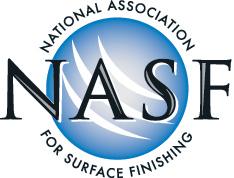| Presented in Partnership with: | |||
 |
 |
 |
 |
Search Results
The 9th William Blum Lecture, Addition Agents, Anions and Inclusions in Bright Nickel Plating
Author: Dr. Henry Brown
Issue: , 1968The mode of action of the unsaturated organic addition agents used to produce semi-bright, sulfur-free nickel and sulfurcontaining bright nickel is considered from the point of view of their molecular structure and the lattice structure of the nickel surface acting as a hydrogenation catalyst. The possible mechanisms of hydrogenation are outlined. The relationship of various anions, boric acid, carboxylic acid buffers and the pH of the bath to the effectiveness of the addition agents is discussed. The role of molecular inclusions derived from the addition agents is considered for single and multiple-layered plates, as well as the role of inclusions deliberately codeposited as fine non-conducting particles with the nickel to obtain maximum corrosion resistance with minimum thicknesses of nickel in decorative copper-nickel-chromium plating.
 |
 |
 |
 |
 |
| Home | Subscribe | Regulations | Compliance Assistance | News | Resources | Resource Locators | Directories | Online Training | About | Search | Contact | NASF.org |
The information contained in this site is provided for your review and convenience. It is not intended to provide legal advice with respect to any federal, state, or local regulation.
You should consult with legal counsel and appropriate authorities before interpreting any regulations or undertaking any specific course of action.
Please note that many of the regulatory discussions on STERC refer to federal regulations. In many cases, states or local governments have promulgated relevant rules and standards
that are different and/or more stringent than the federal regulations. Therefore, to assure full compliance, you should investigate and comply with all applicable federal, state and local regulations.
